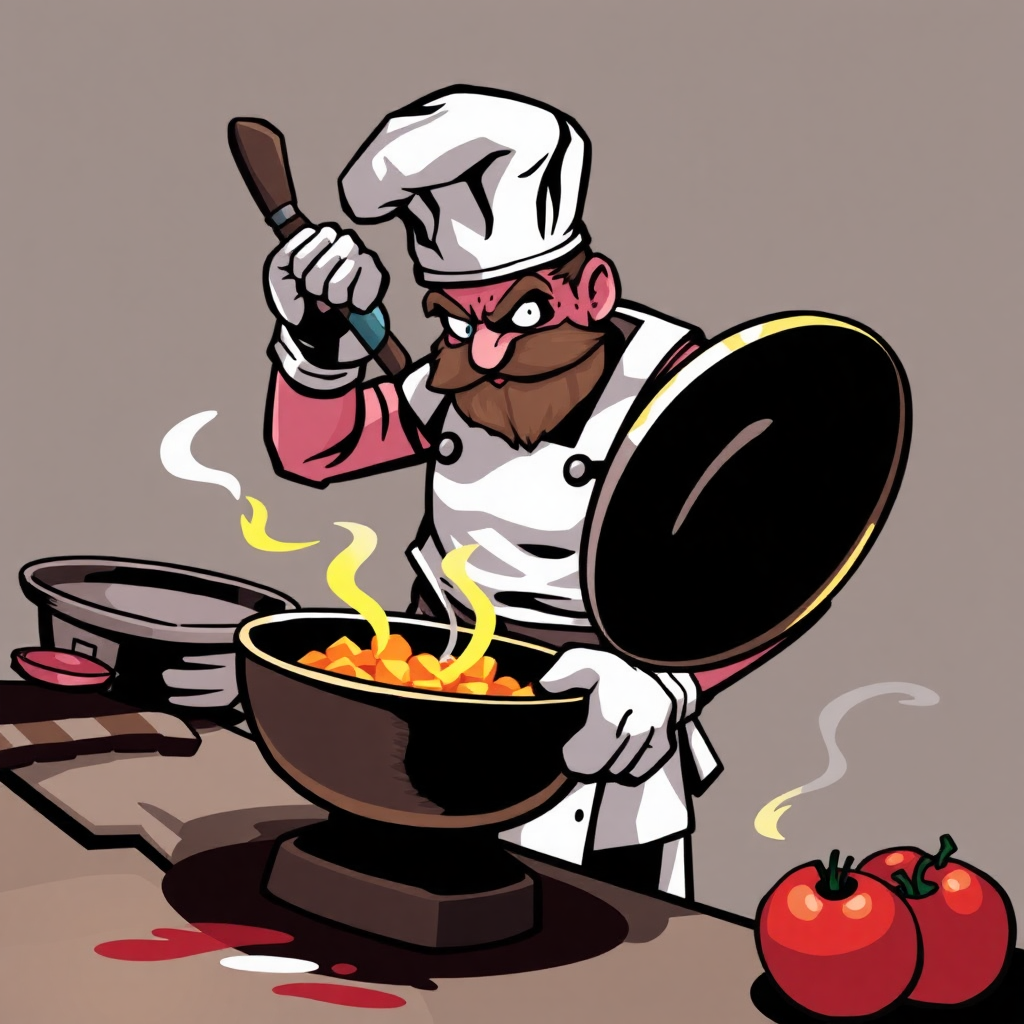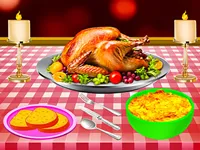Cooking Games
Introduction
Cooking games have taken the gaming world by storm, offering players the chance to step into the shoes of a chef and experience the thrill of preparing and serving dishes in a virtual environment. With their vibrant graphics, interactive gameplay, and wide range of challenges, cooking games have become a favorite genre for casual gamers of all ages. These games combine time-management mechanics with creative cooking techniques, making them both fun and educational.
Whether you are managing a busy restaurant, running a food truck, or experimenting with new recipes, cooking games offer a variety of scenarios that keep players engaged. From high-pressure cooking challenges to creative food design, these games allow players to immerse themselves in the culinary world and develop skills such as multitasking, organization, and creativity. Cooking games are not just about following recipes—they also require strategy, problem-solving, and quick thinking.
The History of Cooking Games
Cooking games have evolved significantly since their inception, with the genre growing from simple kitchen simulations to complex restaurant management games. The first cooking games were relatively straightforward, often centered around basic cooking mechanics such as ingredient gathering, cooking, and serving food. However, as technology advanced and gaming platforms became more sophisticated, cooking games began to feature more intricate gameplay, including time management, customer satisfaction, and the development of multiple restaurants or food-related businesses.
One of the earliest and most influential cooking games was Cooking Mama, released in 2006 for the Nintendo DS. This game allowed players to engage in a variety of cooking mini-games, where they followed recipes and performed actions such as chopping, stirring, and frying. The success of Cooking Mama helped spark a wave of similar games, including titles like Diner Dash and Overcooked, which focused on managing a busy kitchen and serving food to customers under tight time constraints.
In the mobile gaming era, cooking games gained even more popularity with the rise of app-based games like Restaurant Story, Cooking Fever, and Cook, Serve, Delicious! These games allowed players to experience cooking and restaurant management on-the-go, with in-app purchases and social features helping to expand the appeal of the genre. The simplicity of cooking mechanics combined with the challenge of managing time and resources made these games addictive, leading to their widespread success.
Core Features of Cooking Games
-
Time Management
-
One of the most important aspects of cooking games is time management. Players must prepare and serve dishes quickly to keep customers happy and earn points. In many games, players must juggle multiple tasks at once, such as chopping ingredients, cooking food, plating dishes, and serving customers—all while keeping an eye on the clock.
-
Time management is critical to progressing through levels and achieving high scores. As players advance, the speed and complexity of the tasks increase, making it harder to keep up with the demand.
-
Recipe Creation and Experimentation
-
Cooking games often allow players to experiment with different ingredients and create unique dishes. Some games offer a wide range of recipes, while others focus on a specific type of cuisine. Players may need to follow specific recipes or create their own combinations to please customers or pass levels.
-
This feature is particularly appealing to those interested in culinary arts, as it allows them to explore new flavors and techniques in a virtual setting. It also encourages creativity and the ability to think on your feet.
-
Restaurant Management
-
Many cooking games go beyond cooking and incorporate elements of restaurant management. Players are tasked with running a restaurant or food truck, where they must manage inventory, upgrade kitchen equipment, hire staff, and ensure customer satisfaction.
-
Games like Diner Dash and Restaurant City give players the opportunity to design and upgrade their own establishments, while Overcooked focuses on teamwork and cooperation in a chaotic kitchen environment. This aspect of cooking games adds a layer of complexity and strategic thinking, as players must balance cooking tasks with business management.
-
Multiplayer and Social Features
-
Multiplayer modes and social features are often incorporated into cooking games to enhance the experience. In some games, players can collaborate with friends to run a restaurant or compete against each other to see who can prepare dishes the fastest.
-
Social features, such as sharing achievements, competing for high scores, or sending gifts to other players, further enhance the community aspect of cooking games. Many games include leaderboards, allowing players to see how they rank against others worldwide.
-
Progression and Upgrades
-
Progression systems and upgrades are a central component of cooking games. As players complete levels and complete tasks, they can unlock new ingredients, kitchen tools, or restaurant locations. These upgrades help improve efficiency, allowing players to handle more complex dishes and serve more customers.
-
The sense of progression is a major motivator for players, as it provides a clear goal to strive for. Each level brings new challenges and rewards, making the gameplay loop engaging and satisfying.
Why Cooking Games Are So Popular
Cooking games have gained a massive following for several key reasons:
-
Accessibility – Cooking games are easy to pick up and play, making them perfect for casual gamers. The controls are often simple, and the gameplay mechanics are intuitive, allowing players to focus on enjoying the game rather than learning complex controls.
-
Satisfaction of Completing Tasks – The rewarding feeling of successfully completing a dish, serving a customer, or upgrading a restaurant makes cooking games highly satisfying. Players enjoy the challenge of managing multiple tasks while seeing tangible results for their efforts.
-
Creativity and Customization – Many cooking games allow players to customize their kitchens, restaurants, and dishes. This creative freedom adds an extra layer of enjoyment, as players can personalize their experience and express their culinary vision.
-
Time Management Challenge – The time pressure in cooking games adds excitement and urgency. The need to act quickly and think ahead while managing several tasks at once keeps players engaged and motivated to improve their skills.
-
Social Interaction – The multiplayer and social elements of cooking games enhance the sense of community and competition. Whether collaborating with friends or competing for the best score, these features make the games more interactive and enjoyable.
Challenges in Cooking Games
While cooking games are incredibly popular, they do have some challenges:
-
Repetitiveness – Some cooking games can become repetitive over time, especially if they rely heavily on a fixed set of recipes or tasks. This can cause players to lose interest if the gameplay doesn’t introduce enough variety or new challenges.
-
Monetization and In-App Purchases – Many cooking games are free-to-play but rely heavily on in-app purchases or advertisements. This can create a frustrating experience for players who prefer not to spend money or deal with constant ads.
-
Difficulty Curve – The difficulty in cooking games can vary, and some games may introduce steep difficulty spikes that frustrate players. Balancing the challenge and ensuring that the game remains enjoyable is crucial for player retention.
The Future of Cooking Games
The future of cooking games looks bright, with new innovations and trends shaping the genre:
-
Virtual Reality (VR) and Augmented Reality (AR) – As VR and AR technology continues to evolve, cooking games may offer more immersive and interactive experiences. Players could potentially step into a virtual kitchen and cook dishes in a 3D environment, making the experience more realistic and engaging.
-
Culinary Education – Some cooking games could incorporate more educational content, teaching players about real-world cooking techniques, recipes, and food safety. This could appeal to players interested in learning how to cook while having fun.
-
Expanded Multiplayer Features – The multiplayer aspect of cooking games is likely to continue growing, with more opportunities for players to collaborate or compete in real-time. This could lead to more social and community-driven experiences within cooking games.
-
Integration with Smart Devices – Future cooking games may integrate with smart kitchen devices, allowing players to control virtual appliances or learn cooking skills through interactive tutorials.
Conclusion
Cooking games are a unique and engaging genre that combines time management, creativity, and strategy to create a fun and rewarding experience. Whether you're cooking in a fast-paced restaurant, experimenting with new dishes, or managing your own food business, cooking games offer a variety of scenarios to suit every player’s tastes. With their accessibility, satisfying gameplay, and constant sense of progression, these games continue to captivate millions of players worldwide. As the genre evolves, cooking games are likely to become even more immersive and interactive, offering players new ways to enjoy the art of cooking in the digital world.


















